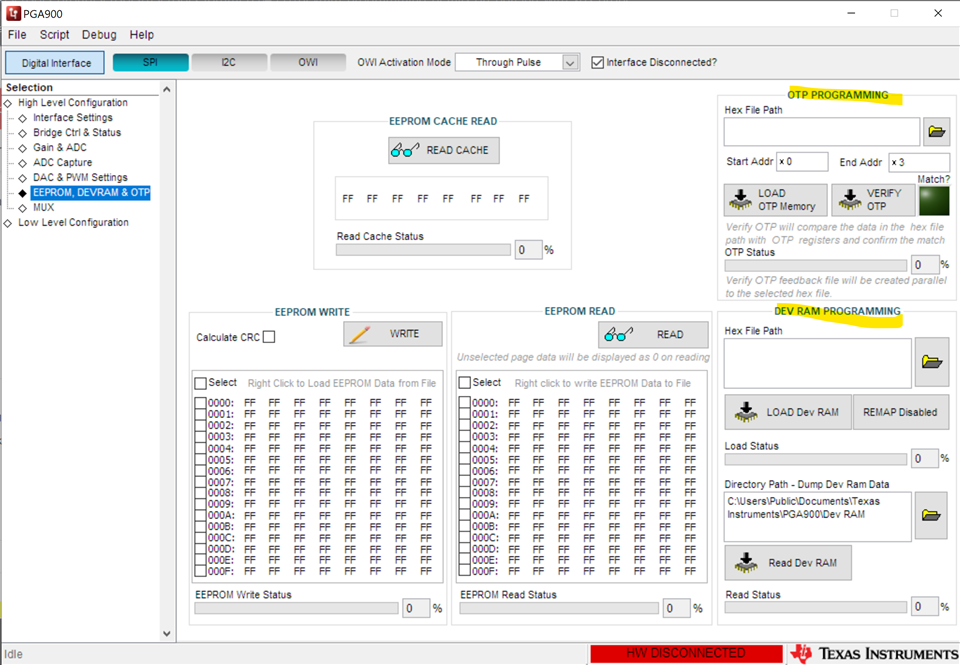Hello,
This question is related on another one I posted on the Sensors forum. I want to program my PGA900 on its EVM board with an XDS probe, like it is explained on the controller's docs. However, I want to only program on DEVRAM, and leave the OTP blank while I'm testing my code. I made a mistake and accidentally programmed the OTP memory on my previous PGA, but I can't tell if I made this mistake while using the Windows GUI app, or then with CCS and the XDS probe (see my post on the sensors forum for the details of what I did). So, because I don't want to accidentally program again on the OTP memory, I want to be sure of a few things on CCS.
Firstly : What do I have to do on CCS to write my code only on the DEVRAM memory ? I edited the .cmd file for the linker so that all the sections originally allocated to OTP are now allocated on DEVRAM. Is that the right thing to do, and is there something else I have to do ?
Secondly : After successfully linking to the PGA900 with CCS and the probe (I know it works because I could read the memory content and the registers), I tried to load my compiled program. However, I got a memory check error : "Cortex_M0_0: File Loader: Verification failed: Values at address 0x21000003 do not match Please verify target memory and memory map.". I suspect it might happen because the OTP memory was already written at that time : am I right ? If I try to load again my program on this failed PGA, I get the same error.
I'd really appreciate any additional information I can have on this subject.
Best regards,
Benjamin GAY.



